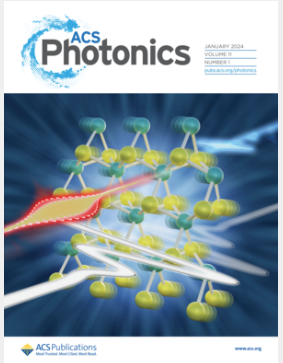Multi-Mechanism Driven Ta2NiSe5–Graphene Heterojunction for Ultrabroadband Detection from Visible to Terahertz Spectrum
IF 6.7
1区 物理与天体物理
Q1 MATERIALS SCIENCE, MULTIDISCIPLINARY
引用次数: 0
Abstract
Ultrabroadband photodetectors are essential for applications such as biomedical imaging, environmental assessment, optical data transmission, gas detection, and security monitoring. However, traditional semiconductor detectors are typically limited to detection within a single spectral range, and achieving ultrabroadband detection often requires integrating multiple detectors. This is particularly challenging in the terahertz range, where detection is constrained by high dark currents and the need for cryogenic cooling. As a result, expanding the detection range has become a critical focus in optoelectronic development. In this study, we successfully demonstrated ultrabroadband detection from the visible to terahertz spectrum at room temperature using a heterojunction formed by Ta2NiSe5 and graphene, driven by multiple physical mechanisms. The detector leverages the combined effects of photoexcited electron–hole pairs and the photothermal response triggered by the asymmetry of the heterojunction, achieving responsivities of 4.8 mA/W at 638 nm, 3.8 mA/W at 1550 nm, 42.9 mA/W at 0.12 THz, and 14.6 mA/W at 0.3 THz. Additionally, the device achieves NEP values as low as 7 pW/Hz1/2 at 0.12 THz and 23 pW/Hz1/2 at 0.3 THz, with a response time of 7.4 μs at 0.12 THz. Our findings demonstrate a novel approach to ultrabroadband detection, achieving high sensitivity and fast response by leveraging multiple physical mechanisms. This work opens new avenues for the future development of optoelectronic detection technologies.

多机制驱动ta2nise5 -石墨烯异质结用于可见光到太赫兹超宽带探测
超宽带光电探测器对于生物医学成像、环境评估、光学数据传输、气体检测和安全监控等应用至关重要。然而,传统的半导体探测器通常仅限于在单一光谱范围内进行检测,并且实现超宽带检测通常需要集成多个探测器。这在太赫兹范围内尤其具有挑战性,因为在太赫兹范围内,检测受到高暗电流和低温冷却需求的限制。因此,扩大探测范围已成为光电技术发展的关键问题。在这项研究中,我们成功展示了室温下从可见光到太赫兹光谱的超宽带探测,使用由Ta2NiSe5和石墨烯形成的异质结,由多种物理机制驱动。该探测器利用光激发的电子空穴对和异质结不对称引发的光热响应的综合效应,在638 nm处实现了4.8 mA/W的响应,在1550 nm处实现了3.8 mA/W的响应,在0.12太赫兹处实现了42.9 mA/W的响应,在0.3太赫兹处实现了14.6 mA/W的响应。此外,该器件在0.12太赫兹时的NEP值低至7 pW/Hz1/2,在0.3太赫兹时达到23 pW/Hz1/2,在0.12太赫兹时的响应时间为7.4 μs。我们的研究结果展示了一种超宽带检测的新方法,通过利用多种物理机制实现高灵敏度和快速响应。这项工作为光电探测技术的未来发展开辟了新的途径。
本文章由计算机程序翻译,如有差异,请以英文原文为准。
求助全文
约1分钟内获得全文
求助全文
来源期刊

ACS Photonics
NANOSCIENCE & NANOTECHNOLOGY-MATERIALS SCIENCE, MULTIDISCIPLINARY
CiteScore
11.90
自引率
5.70%
发文量
438
审稿时长
2.3 months
期刊介绍:
Published as soon as accepted and summarized in monthly issues, ACS Photonics will publish Research Articles, Letters, Perspectives, and Reviews, to encompass the full scope of published research in this field.
 求助内容:
求助内容: 应助结果提醒方式:
应助结果提醒方式:


